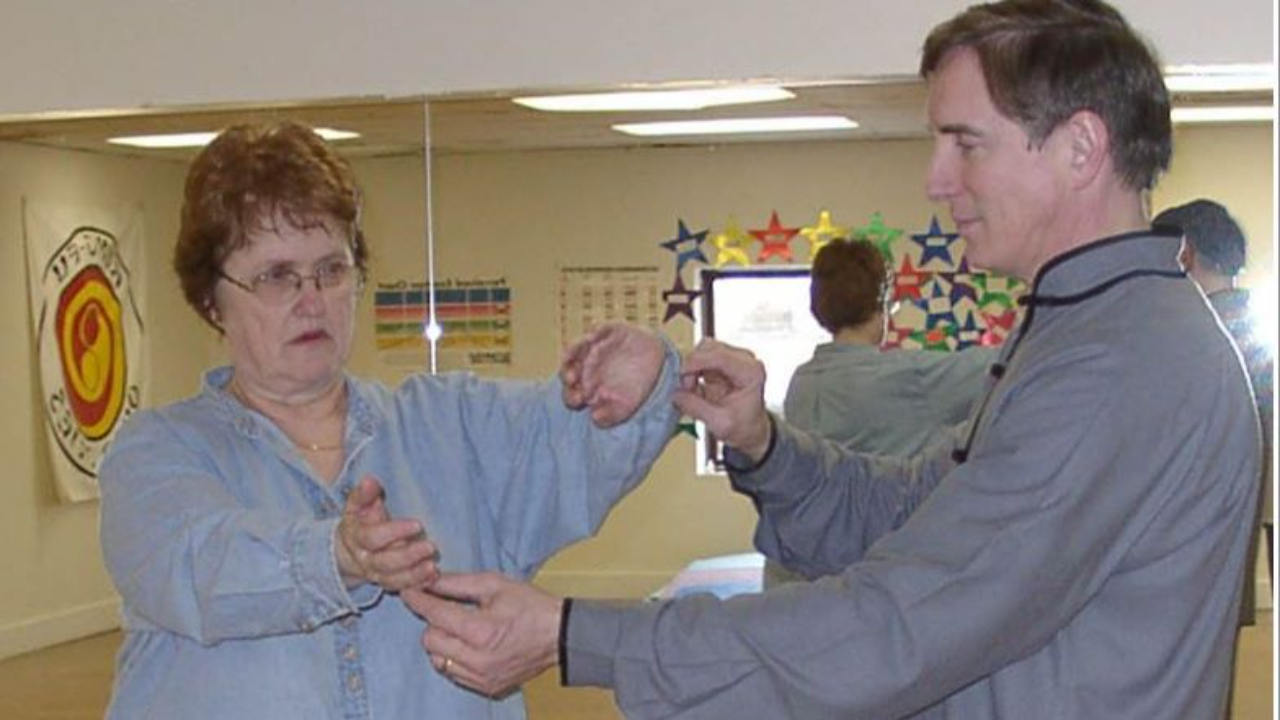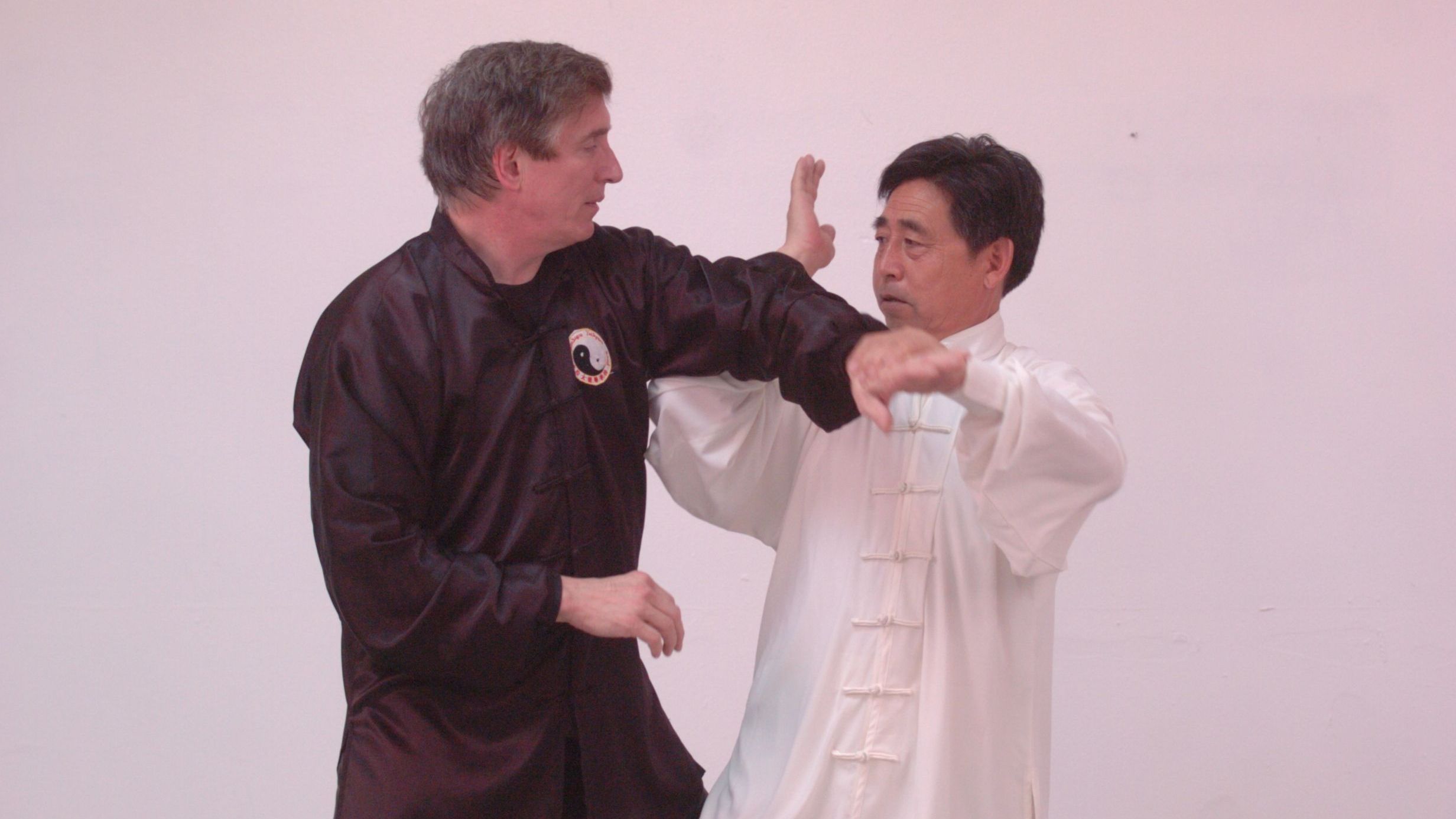Chen Tai Chi is an Athletic Art

There's an amazing story in the New York Times on Sunday, May 27, 2007, titled Learning to Dance, One Chunk At a Time. Reporter Diane Solway writes about Angel Corella, a dancer from Spain who has a gift. He can watch a dance performance onstage and after seeing it only once, he can recreate all the dance steps--not only the lead dancer, but the steps of every supporting dancer.
There is a lot of tai chi in this article. It discusses the path that dancers take to learn a routine. The article says:
...most dancers share a relatively similar path, first learning the choreography and then adding layers of detail and color. Finally, they absorb the work so completely that its elements literally become automatic, leaving the dancer's brain free to focus on the moment-by-moment nuances of the performance.
The story also says that learning the choreography is just the first step in perfecting it:
They must also convey the intention and feeling of the works they perform.
In practicing ta...
A Great Group of Friends

Jay and Penny Stratton were kind enough to host a Going Away Party tonight for Nancy and me. I think I'd be very disappointed if my teacher left town. This Friday, Nancy and I will leave for Florida.
This isn't easy. My students have become our friends. The weather was perfect for tonight's barbeque at the Stratton's. And you should see the woodwork this guy does. What an artist!
Jay is also an artist on the grill. Also at the party were Skip Hackett, Vicky and Boris Arratia, Greg and Carol Surrierer and their daughter Rhiannon, Chris and Kim Miller, Kim Kruse (now married but I'll be darned if I can remember her married name), Chris and Kat Lierly, Doug and Jane Outterson, Jon Stratton and his friend Taylor, and Colin Frye. John Morrow also stopped by.
Over the years, a lot of students have left me, but I've always been there. Vicky said tonight that she always knew the school was there, even if she wasn't, and it gave her comfort. I understand that.
Working full-time and ...
Baby Steps are the Key to Progress in Taiji, Xingyi and Bagua

The past 10 years have brought changes that I didn't imagine when I began teaching in 1997. I worked for a long time in TV news and moved a lot. In the 90's I settled in the Quad Cities and in 1997 decided to start teaching. Little did I realize what would happen when I did. Basically, I realized that something was missing from my Hsing-I, Yang Tai Chi, and Bagua. I began reading a listserve--the Neijia List--on the Internet, and I read discussions by people like Mike Sigman, using terms I hadn't heard before such as peng jin and ground path. I asked if there was someone in my area that could show me what it meant. I was guided to Jim and Angela Criscimagna, in Rockford, Illinois.
After meeting Jim, I realized within an hour that I had to start over. Chen tai chi was so different, and the body mechanics were so much better than what I had been doing, my martial arts changed direction instantly. I explained to my students that our arts weren't complete, and they followed me as I grew,...
The Heart of Our Kung-Fu School

As our school comes to a close with final classes this Saturday, I'm honoring some of the people who have helped me during the past 10 years of teaching.
Marilyn "Skip" Hackett joined our tai chi class shortly after I began teaching in Bettendorf in 1999 (I began teaching in Muscatine in 1997). She loved tai chi so much that she added the kung fu class to her schedule, even though she was nearly 60 and had never done martial arts before.
Skip quickly became the mother hen of our school, recruiting many new students from her vast number of friends around Bettendorf. She became a publicist, mentioning the classes many times in her Pet Peeves column in the newspaper 50+ Lifestyles. She talked the publisher into giving me a column to discuss philosophy. She was a tireless promoter of the school, and kept student names, phone numbers, and email addresses organized for her dis-organized teacher. She bailed me out many times when I needed to contact students.
Skip became much more than a...
Sometimes Martial Arts Students Become Family

There are two great benefits to teaching martial arts. One is the way that teaching makes you a better martial artist. It pushes you to improve your own skills. That was driven home to me the first night I taught classes--October 1, 1997. As I stood in front of a small group of young guys, I realized that they were looking to me as an expert, and if I made a mistake, I would lose their respect. The pressure to be perfect is intense for a teacher.
The other great thing about teaching is friendship. A few students along the way become much more than students--they become family. The first week I taught classes, two young guys came in to see what was happening. Richie Coulter and Chad Steinke were teenagers. Richie had a brown belt in TKD but was curious about kung fu. The photo shows Chad on left and Richie on right.
They took to the training and became obsessed, rarely missing a class. After four months, Richie said that he had already learned more from me than in 2 years of taekwo...
Chen Xiaoxing One Year Later

It's been a year since Grandmaster Chen Xiaoxing stayed in our home for a week. He came to Moline partially as a favor, because I sponsored his visa to visit the U.S. and teach seminars around the country. He held a 2-day seminar on Laojia Yilu at our school and I received some good private training in my basement. It was fascinating to host a man like this and to see a true master up close and personal.
Grandmaster Chen is in charge of all tai chi training in the Chen village. He has trained some talented young masters. We're about the same age. He's the younger brother of Grandmaster Chen Xiaowang. He's the uncle of Chen Bing.
It was difficult for us to communicate, since he doesn't speak English, but when he trains, no words need to be said. One day we did push hands in my basement for a while. Each time I tried to attack him, he relaxed and suddenly, I found myself on the floor. We were both laughing--I was laughing because it was amazing to feel what he was doing but still be un...
A Kung-Fu Life

This picture was taken in 1974, when I had earned my green belt from Grandmaster Sin The in Shaolin kung fu. I'm holding the "Staff of Death," which I and my students still use in our school. This staff has made dozens of moves with me--it has traveled with me to homes in Kentucky, Ohio, Nebraska, Iowa, Illinois, and soon--Florida.
Our school is closing at the end of May. I'm taking a position as director of media relations at the University of South Florida. I'll be the university spokesperson and I'll work to get publicity for them, as I have done for ACT--the company that produces the college admissions exam--for the past 8 years.
It's a little strange to look at this picture, this 21-year old kid 33 years ago, and think of the journeys I've taken through the martial arts and through life. Even though it's 33 years later, I feel as if I've only scratched the surface of martial arts. There is so much more to learn.
When I take the Staff of Death to Florida, I'm excited at the pros...
Iron Boy Learns Iron Palm

Read this article about a teacher in Miami who trains in Iron Palm.
This teacher might be able to break four bricks, but my friends, "chi" has nothing to do with it.
When you "boil" your hand until the fingers swell up like grapes, and you continue doing this to your poor hands until you no longer feel anything, why would anyone believe that doing such a ridiculous thing is building "chi"?
If you condition part of your body to withstand pain--for example slamming your palm a thousand times a day onto a bean bag for months or years--it has nothing to do with chi.
If chi exists (and I doubt it) it would be a natural thing. Damaging part of your body so you can break a few bricks is the least natural thing you can do.
I've seen the knuckles of guys who pound wood or metal to strengthen their striking power and their "chi." Their knuckles are deformed, horribly calloused, and ugly. There is a philosophical problem here--a disconnect between the concept of "chi flow" and this type of ...
Congratulations to Our Tournament Winners


I've been teaching for nearly 10 years, and one of the most enjoyable parts of that experience has been seeing my students compete successfully in regional tournaments. A week ago, my friend John Morrow hosted a tournament at his school in Moline, Illinois.
Four students competed and walked away with 8 trophies between them. They're pictured here--from left to right--Chris Miller, Kim Miller, me (I didn't compete due to a lack of black belt competitors), Kim Kruse, and Rakeem Johnson. Kim Miller is 6 months pregnant and placed with the Chen 19 form, an appropriate selection since the tournament was held on World Tai Chi Day. I'm very proud of these guys.
--by Ken Gullette
Thoughts on Life and Death in My Mother's Final Weeks

My mom is dying.
Three weeks ago, she was working. Now, she has very little time left due to a fast-growing cancer.
She has been a Christian as long as I can remember. In her own mind, she was a very serious one. In fact, when she learned that I had parted company with religion and had embraced Taoism as a philosophy, she predicted that "if anything ever happens to one of his children, he'll be on his knees again praying."
Her prediction became partially true. Shortly after she said that, in 1980, my daughter Shara died of crib death. But despite the devastation and sorrow--as low as a human can go emotionally--my philosophy helped me weather the storm over time.
When someone I know is dying, I talk with them about it because I feel that I'm intimately familiar with the topic. And I ask them questions. I'm curious about what they're thinking, and if it's causing them to change opinions on their faith, or the way they view things. I talked with my mom about it two weeks ago, and she...





